Storm and Flooding Information
Water Obstruction & Encroachment Program
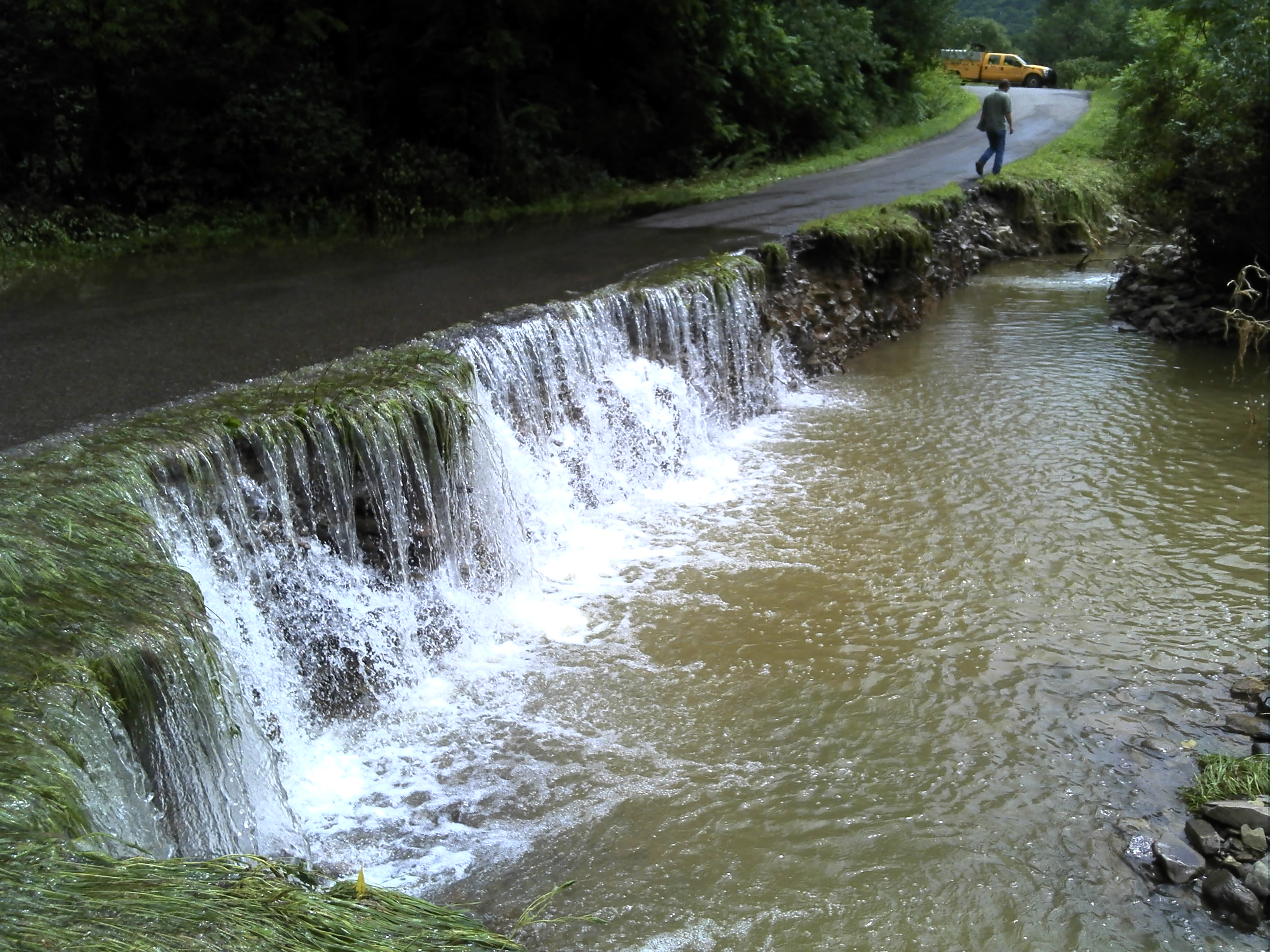 The structures and activities regulated by Chapter 105 and 106 are often affected by storms and flooding. While this page contains information specific to water obstructions and encroachments in streams, floodways/floodplains, and other bodies of water, DEP has an agency wide
storm-related information webpage as well.
The structures and activities regulated by Chapter 105 and 106 are often affected by storms and flooding. While this page contains information specific to water obstructions and encroachments in streams, floodways/floodplains, and other bodies of water, DEP has an agency wide
storm-related information webpage as well.
This webpage contains resources to help municipal officials, property owners, and others wo have property or water obstructions and encroachments, such as bridges, affected by storms and flooding.
Damaged Bridges and Culverts
Permits for bridges and culverts are required across the Regulated Waters of this Commonwealth. Permits provide comprehensive regulation and supervision to protect health, safety, welfare, and property of the people, and to assure proper planning, design, construction and maintenance to protect water flow and navigation. Permits are also required to protect the natural resources, water quality, natural regime, and carrying capacity of watercourses.
The fact that a permit is required is not a hinderance to normal maintenance.
In fact, requiring normal maintenance to be performed by owners of bridges and culverts is one purpose of requiring a permit. DEP includes in all its permit approvals, normal maintenance in accordance with the approved permit plans. However, changes to the designs or modifications require a permit approval. If an owner never obtained a permit, one must be obtained to perform maintenance. This ensures the proper planning, design, and construction of the structures for the protection of natural resources.
A permit may not be required depending on the current permitting status of the bridge or culvert, and the proposed replacement, repair, or maintenance work proposed.
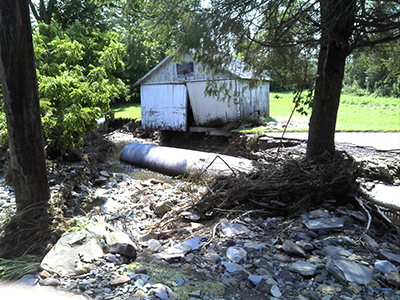
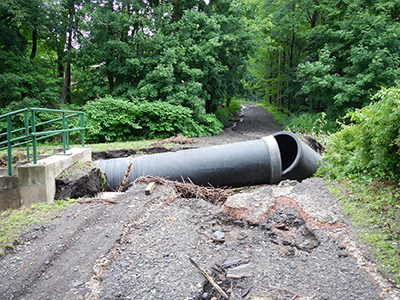
Need help determining if permits or other regulatory requirements from DEP are required for bridge and culvert maintenance and repair? DEP’s Bridge and Culvert Maintenance & Repair Tool is an online interactive tool designed to assist bridge and culvert owners in determining what, if any, permit and notification requirements are needed for bridge and culvert maintenance and repair. By answering questions about the bridge and culvert, the nature of the proposed work, and to avoid delays the tool will direct you on how to move forward with your project.
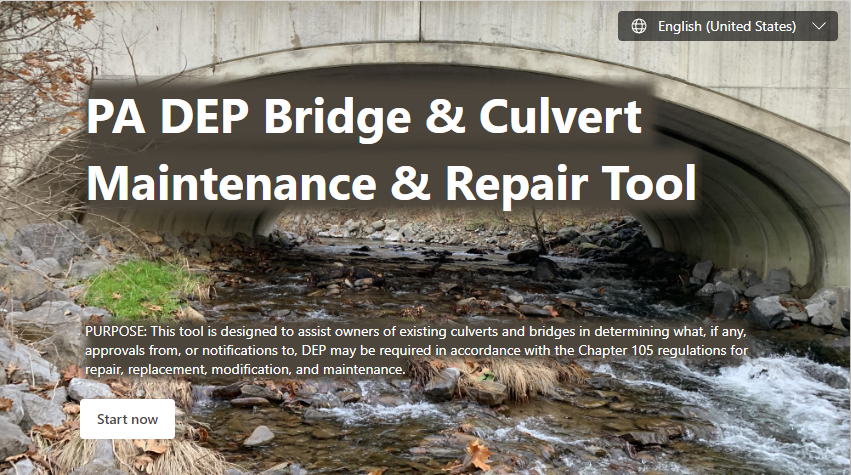
Debris Removal From Streams
There are two main categories of debris in streams: 1) woody debris and trash, and 2) sediments and gravels.
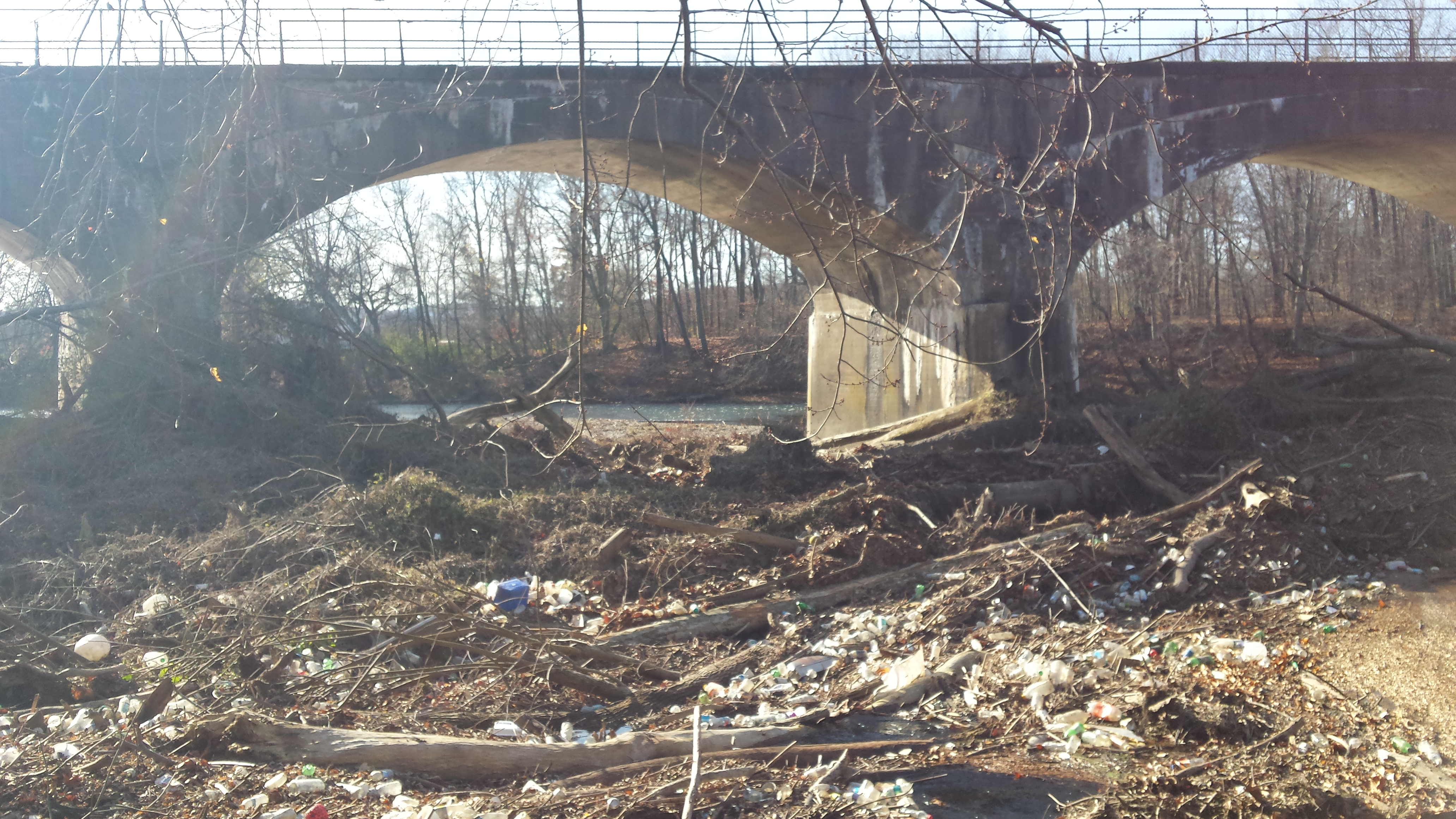 Woody Debris and Trash: Removal of woody debris and trash from streams is not a regulated activity under Chapter 105 and a permit is not required for that activity. However, if machinery is used in a stream channel a permit may be required or if water obstructions and encroachments are proposed to remove the woody debris or trash a permit is required.
Woody Debris and Trash: Removal of woody debris and trash from streams is not a regulated activity under Chapter 105 and a permit is not required for that activity. However, if machinery is used in a stream channel a permit may be required or if water obstructions and encroachments are proposed to remove the woody debris or trash a permit is required.
Sediments and Gravels: Permits are required for the removal of sediments and gravels from a stream, as they are an encroachment and is regulated by Chapter 105. However, Chapter 105 requires bridge and culvert owners to maintain their structure openings. Maintenance of the structure opening(s) is required by the Chapter 105 regulations and is covered under normal maintenance authorized by Chapter 105 permits, provided it is performed in accordance with the Department’s
Standards for Channel Cleaning at Bridges and Culverts.
Emergency Permitting
The Department may issue emergency Chapter 105 water obstruction and encroachment permits for activities that are necessary to alleviate an imminent threat to life, property, or the environment. Emergency Permits are issued by DEP upon request.
In many situations, DEP can issue an emergency permit as fast as the same day it is notified.
The emergency permitting webpage contains more information.